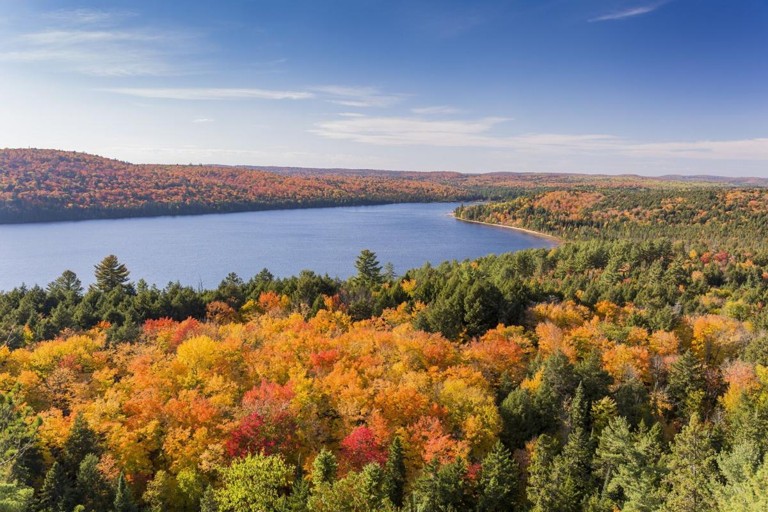Nature & Outdoors
Record Autumn Colors Draw Crowds to Algonquin Park
This October’s mild temperatures have extended Ontario’s fall foliage season, with thousands of visitors capturing vibrant reds and golds across the park’s rolling hills and mirrorlike lakes.
By Ethan Marshall • 2025-10-08

In a year marked by unpredictable weather, nature has delivered a spectacular consolation: a record-breaking autumn display in Algonquin Provincial Park. Stretching from the end of September well into late October, the colors have lingered longer than anyone expected — a dazzling mix of crimson maples, golden birches, and russet oaks mirrored in calm northern lakes.
The phenomenon has drawn visitors in unprecedented numbers. “We’ve seen weekend traffic triple,” says park superintendent Caroline Holt. “People are traveling from Toronto, Ottawa, even the U.S. border to witness this extended peak. It’s one of the longest color seasons we’ve recorded in the past two decades.”
Early frosts usually bring a quick end to the foliage, but this year’s mild temperatures and steady rainfall created perfect conditions. “The trees have been under little stress,” explains environmental scientist Dr. Raj Patel of the University of Guelph. “They held onto their leaves longer, allowing pigments to deepen and produce richer tones.”
Along Highway 60, cars line the roadside as photographers, hikers, and families spill out to capture the view. The scene near Canoe Lake has become particularly popular, with reflections so vivid they appear painted. “It’s like walking through a living postcard,” says visitor Jenna Li from Mississauga. “Every turn looks unreal.”
Local outfitters have felt the surge in tourism. Canoe rentals and guided hikes, usually quiet by mid-October, are fully booked. “We extended our season two extra weeks,” says guide Liam Fraser of Northern Trails Adventures. “The colors just kept coming, and people didn’t want to miss it.”
For longtime parkgoers, the extended season feels like a gift. “I’ve been hiking Algonquin for thirty years,” says Fraser. “I’ve never seen it stay this vibrant for this long. Normally, by Thanksgiving, most of the leaves are gone — but not this year.”
The park’s management team, however, is urging visitors to tread lightly. Increased foot traffic has strained certain trails, and parking lots have overflowed on weekends. “We’re thrilled people are reconnecting with nature,” says Holt. “But we also need to remind everyone to respect the environment — pack out what you pack in.”
Beyond the beauty, the prolonged color season offers valuable insights for scientists studying climate change. “We can’t separate aesthetics from ecology,” says Dr. Patel. “A longer fall might seem pleasant, but it also reflects shifting temperature patterns that affect migration, soil moisture, and wildlife behavior.”
Still, for many, the park’s transformation remains purely emotional — a rare reprieve from daily noise. “There’s something grounding about watching the leaves fall slowly instead of all at once,” says Li. “It feels like time has stretched just enough for us to notice what we often miss.”
As the final weeks of color fade into the soft grays of early winter, Algonquin Park stands as a reminder of nature’s resilience and artistry. Whether by canoe, hiking trail, or roadside lookout, this season’s beauty has proven that sometimes, even small shifts in weather can turn the familiar into something unforgettable.